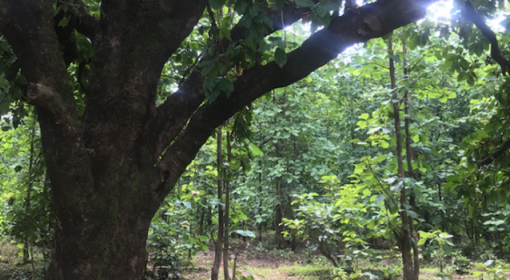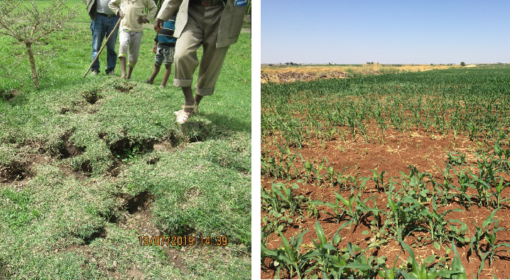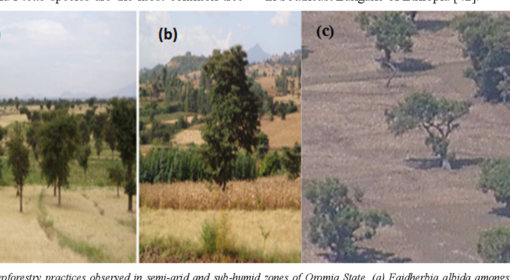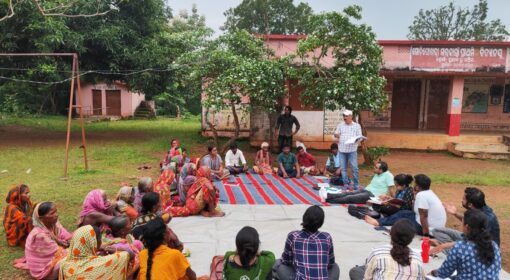By Dhwani Lalai, Shivangi Anand, Ishan Agarwal, Chetan Agarwal, Manohar Pawar, Nishtha Relan (Foundation for Ecological Security)
Over the past few decades, there has been an increasing focus on checking the spread of invasive species, which is a growing threat to the country’s biodiversity. India has also adopted the Aichi Biodiversity Target 9 to be achieved under the Strategic Plan for Biodiversity 2011-20 which talks about the need to address the problem of invasive alien species. Historically, the management of invasive species in particular and governance of natural resources at large has largely been undertaken through a ‘technocratic’ approach without the active participation of local communities. In this report, we explore the community-based management of invasive species in forest fringe areas in the Mandla District of Madhya Pradesh, which involves the active involvement of local communities residing in the periphery of Kanha Tiger Reserve in the governance of their natural resources with a specific focus on the adaptive management of invasive species, Lantana camara.
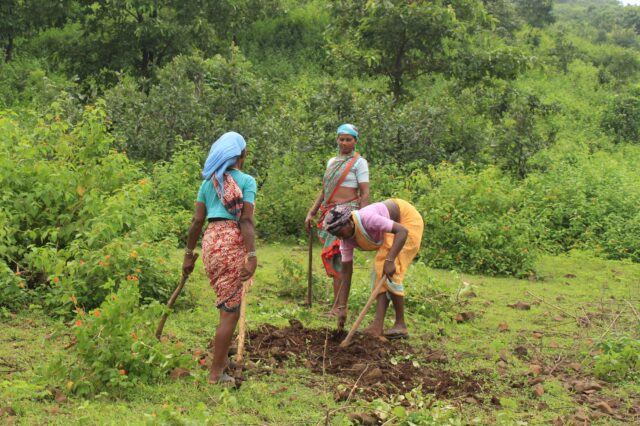
While serving as an important habitat for diverse species of endangered flora and fauna and a crucial tiger habitat in the Central Indian landscape, this region is also home to the Baiga, Gond and other tribal groups who have shared a close relationship with their natural resources for generations. Several studies have shown the extent of the invasion of Lantana in the country, and report that this invasive species threatens close to 44% of Indian forests, with Central India being one of the places where it has spread most densely. Field observations corroborate this, and reveal that Lantana has spread densely on the forest fringes and private agricultural uplands in the region which are close to the forests. This has affected the region’s biodiversity, access of communities to Non-Timber Forest Produce (NTFP) and other resources, impacted the existing human-wildlife interactions and even rendered certain agricultural lands useless for cultivation.
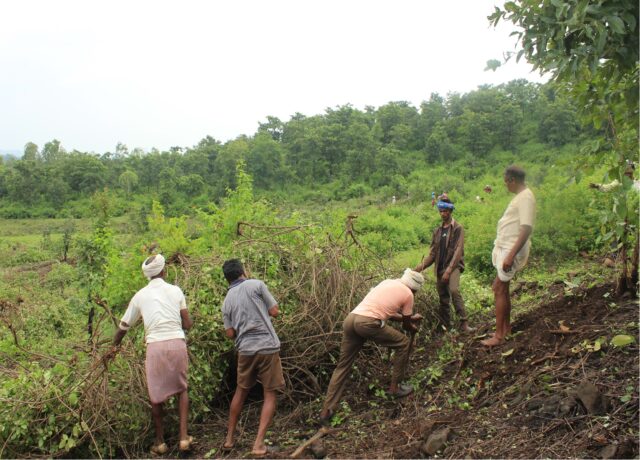
With support from external funding agencies and voluntary contribution, until 2020, communities in 111 villages across the Kanha landscape restored 6078 hectares of land by removing Lantana and actively managing them. The local village institutions played a crucial role in this by identifying the infested areas, mobilizing resources, coordinating the removal and stimulating the collective management of the restored sites. Other land-based and water-based restoration efforts, such as collection and dispersal of palatable grass seeds, stump-dressing, protection from grazing cattle and creation of temporary water harvesting structures (bori bunds), complemented the removal of Lantana to create a more enhanced impact. The village institutions also enforced by-laws developed to promote collective action for effective protection and sustainable utilisation of the restored areas. The extent of the community’s access, resource management rules, including penalties to be levied in case of any violation, are all laid out in these rules. The village institution also closely coordinates with other formal and informal institutions in the landscape and mediates between different stakeholders to ensure better management practices.
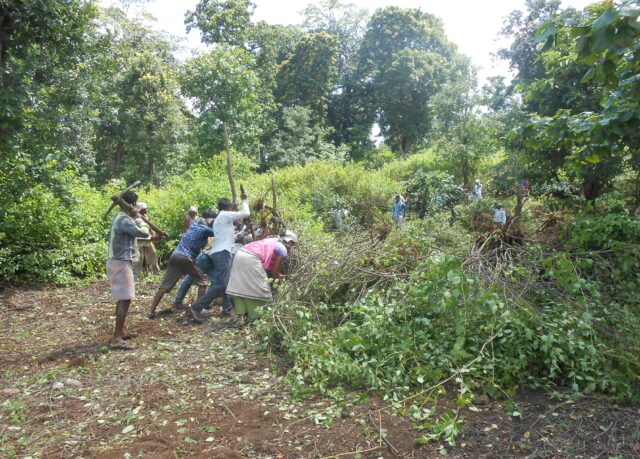
In order to understand the results of these participatory processes undertaken for the management of invasive species, an assessment study was conducted from September 2020 to February 2021 using participatory learning tools (Focus Group Discussions and transect walks in 18 villages), in-depth interviews with 191 randomly sampled farmers, and biophysical vegetation assessments in 16 villages. The study followed a socio-ecological systems’ approach to comprehend the outcomes arising from community involvement in restoration efforts[1].
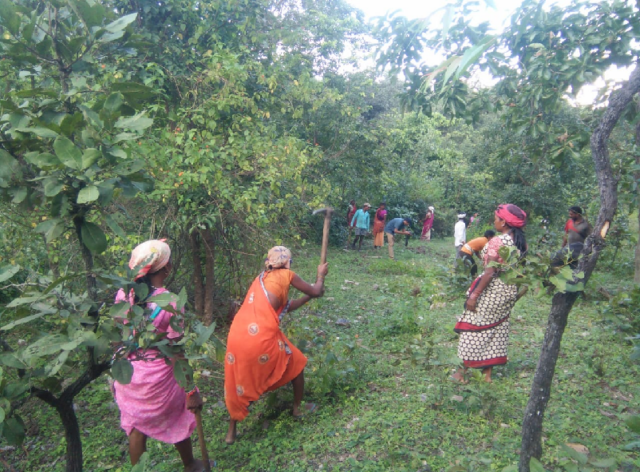
The embedded approach adopted for the removal of Lantana from the forest fringe areas was seen to benefit the landscape and its communities in many ways. In just two years post Lantana removal, an increase in various parameters such as number of species, species diversity, density of regenerating plants, and climbers etc. was observed. The standing biomass and above ground carbon stock also increased by 16% in two years and was visibly higher in community-managed common lands as compared to unmanaged common lands. Increased access to mahua flowers and tendu leaves, two of the most important NTFP in the region, had a direct impact on the livelihoods of the communities; additionally, it helped reduce the time and effort women had to spend to collect these resources. It was also found that the fodder productivity of community-managed lands was approximately 8 times higher than that of unmanaged common lands, thus opening up the former to regeneration of grass species first, and subsequently to grazing by livestock.
Another benefit perceived by the community was the ‘reduction in crop raiding’ by wild animals. As observations suggest, the Lantana thickets close to agricultural fields form an ideal space for the roosting of wild boars, thus increasing the chances of crop depredation. As was experienced by the farmers, removal of Lantana reduced the chances of crop depredation to a certain degree due to the lack of these hiding spaces for the wild animals in such close proximity to the agricultural fields. It also increased the visibility of their lands, reducing the effort required to protect them.
Lantana has infested not only the forest fringes but also the private agricultural uplands (or barra lands). Generally, suitable and used for the cultivation of millets (Kodo and Kutki), these lands have been left uncultivated due to the dense growth of Lantana. However, post Lantana removal, several farmers chose to improve these lands and through personal contribution and leveraging public investments such as Mahatma Gandhi National Rural Employment Guarantee Scheme (MGNREGS) and funding from FES projects; they undertook farm bunding, and silt application, making them suitable for growing paddy as well.
The results indicate that a community-based approach for active management of invasive species may bring about positive social and ecological outcomes. The effective management, or lack thereof, of species such as Lantana camara impacts the site in question as well as the larger landscape of the adjacent ecological and agro-ecological systems. The aim is to see this mosaic of restored sites within the larger landscape such that its ripple effects will be observed on the overall ecological health and livelihoods of the local communities. Institutionalized financial resources, with decentralized community-led institutional arrangements at the heart of their approach, will go a long way in the sustainable management of invasive species.
While the current study focuses on small-scale restoration and village-level impacts, bringing forth a clear perception by the communities on decline in human wildlife conflict, a more rigorous study is required to bring out the impact on wildlife due to these interventions and analyse in-depth the impact on deeper forest areas.
[1] https://fes.org.in/resources/studies-&-reports/studies/Lantana-impact-study-report-facing-page.pdf
